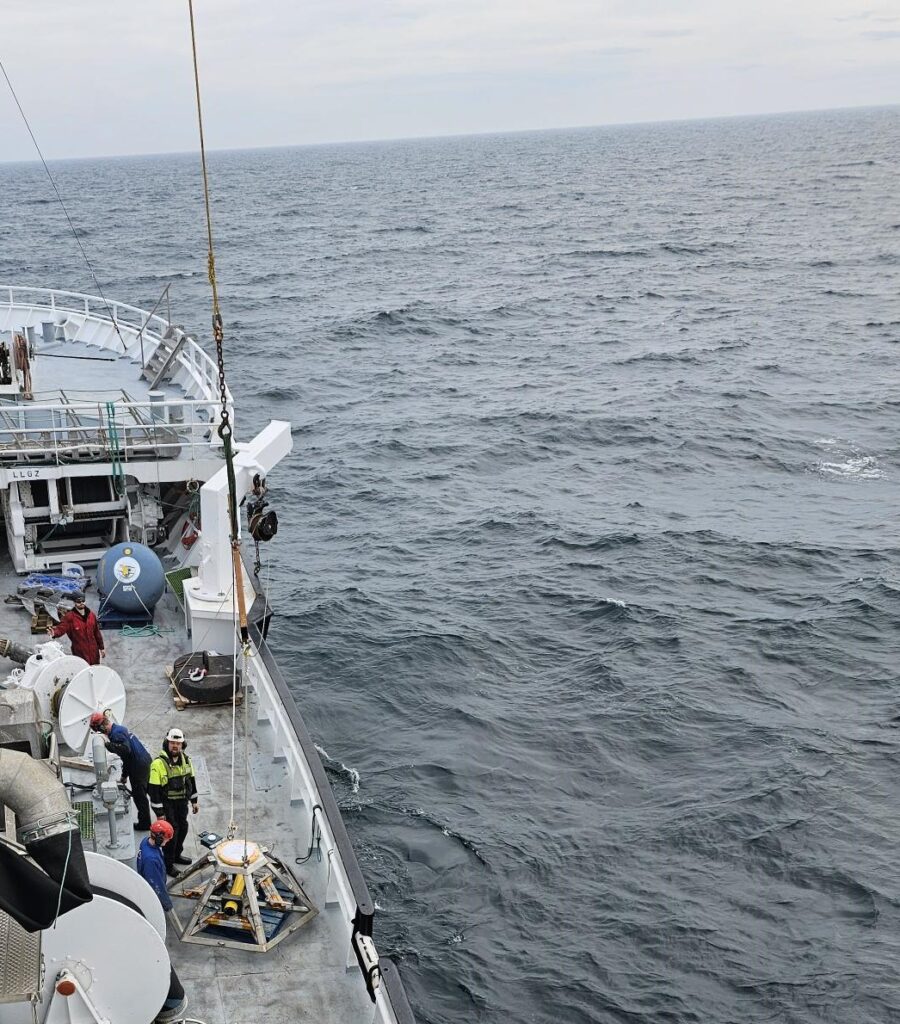Wind Energy – Scotland
Salamander, a joint venture between Ørsted, Simply Blue Group and Subsea7, has partnered with two Scottish universities to investigate any potential impact of floating windfarms on marine ecosystems.

The PREDICT 2.0 initiative involves the deployment of various sensors that can be used to help identify the potential impacts of floating wind farms on marine ecosystems, including the drivers of variation in fish movement and availability as prey.
The innovation package has now been deployed on the Salamander floating wind site, as was committed to during the project’s Innovation and Targeted Oil & Gas (INTOG) bid. The sensors – which include a fluorometer and echosounder – are gathering data on fish presence and behaviour as part of a research program led by the University of the Highlands and Islands’ (UHI) Environmental Research Institute and the University of Aberdeen. When the programme is complete, the equipment will be fully removed.
Tom Brown, Salamander’s Innovation Manager, said: “This multi-year initiative aims to help us develop a deeper understanding of fish migration patterns and how these can be better monitored. The goal is to improve siting of offshore wind farms to minimise any impact on fish and their predators.
“We already know that the demand for offshore renewable infrastructure is increasing exponentially and by ensuring we can appropriately research new project locations, we can more sustainably build a path to a better energy future while protecting the environment.”
Salamander’s Project Director, Hugh Yendole said: “It’s really good to see the Salamander project team deliver once again, on time, one of the key components that demonstrates Salamander’s value to the commercialisation of floating wind and for the Scottish supply chain.
Dr Benjamin Williamson, Associate Professor of Energy at UHI said: “Marine sensing is vital to understand the environment around floating offshore wind farms. Robust information and evidence are needed to inform where offshore wind developments should be located to better protect marine ecosystems. This exciting research will help to understand the drivers of variation in fish movement and the potential for environmental interactions with offshore wind.”
The 100 MW floating wind farm is to be located 35 km off the coast of Peterhead, generating enough green energy to power 100,000 homes. In May, the project submitted its offshore consents application to the Scottish Government.
If consented, the project will provide key insights and opportunities for the Scottish supply chain for future larger-scale developments in Scottish waters and further afield, ahead of the larger-scale ScotWind build-out.
